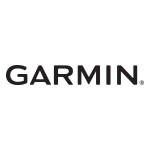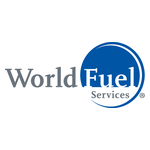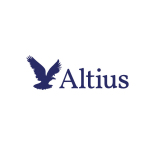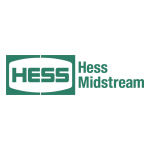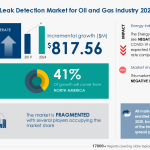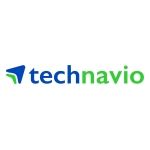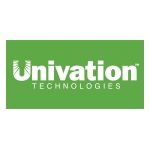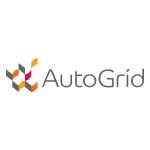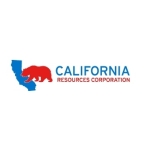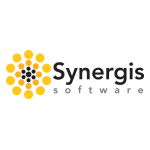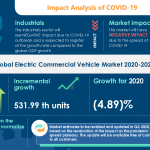Key Developments:
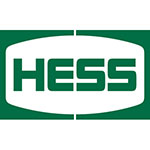
-
Increased the estimate of gross discovered recoverable resources to approximately 9 billion barrels of oil equivalent (boe) for the Stabroek Block (Hess – 30%), offshore Guyana; announced oil discoveries at the Yellowtail-2 and Redtail-1 wells in September, bringing total discoveries on the Block to 18
-
Sanctioned development of Payara, the third oil development on the Stabroek Block, which will have the capacity to produce up to 220,000 gross barrels of oil per day (bopd); first oil is expected in 2024
-
Agreed to sell the Corporation's 28% working interest in the Shenzi Field in the deepwater Gulf of Mexico for total consideration of $505 million, with an effective date of July 1, 2020; the sale is expected to close prior to year-end
Third Quarter Financial and Operational Highlights:
-
Net loss was $243 million, or $0.80 per common share, compared with a net loss of $212 million, or $0.70 per common share in the third quarter of 2019
-
Adjusted net loss1 was $216 million, or $0.71 per common share, compared with an adjusted net loss of $105 million, or $0.35 per common share in the prior-year quarter
-
Oil and gas net production, excluding Libya, averaged 321,000 barrels of oil equivalent per day (boepd), up from 290,000 boepd in the third quarter of 2019; Bakken net production was 198,000 boepd, up 21% from 163,000 boepd in the prior-year quarter
-
Crude oil put option contracts are in place for more than 80% of forecast net oil production for the remainder of 2020 with a fair value of approximately $205 million at September 30, 2020; realized settlements on crude oil put option contracts during the first nine months of 2020 were approximately $700 million
-
E&P capital and exploratory expenditures were $331 million, compared with $661 million in the prior-year quarter
-
Cash and cash equivalents, excluding Midstream, were $1.28 billion at September 30, 2020
2020 Updated Full Year Guidance:
-
Net production, excluding Libya, is expected to be approximately 325,000 boepd, down from previous guidance of approximately 330,000 boepd primarily due to hurricane-related downtime in the Gulf of Mexico
-
Bakken net production is expected to be approximately 190,000 boepd, up from the previous guidance of approximately 185,000 boepd due to strong year to date performance
-
E&P capital and exploratory expenditures are projected to be approximately $1.8 billion, down from previous guidance of approximately $1.9 billion
-
“Adjusted net income (loss)” is a non-GAAP financial measure. The definition of this non-GAAP measure and a reconciliation to its nearest GAAP equivalent measure appears on pages 7 to 9.
NEW YORK--(BUSINESS WIRE)--Hess Corporation (NYSE: HES) today reported a net loss of $243 million, or $0.80 per common share, in the third quarter of 2020, compared with a net loss of $212 million, or $0.70 per common share, in the third quarter of 2019. On an adjusted basis, the Corporation reported a net loss of $216 million, or $0.71 per common share, in the third quarter of 2020, compared with an adjusted net loss of $105 million, or $0.35 per common share, in the prior-year quarter. The decrease in adjusted after-tax results compared with the prior-year period primarily reflects lower realized selling prices and higher exploration expenses.
“We continue to execute our strategy and achieve strong operational performance while prioritizing the preservation of cash, capability and the long term value of our assets during this low price environment,” CEO John Hess said. “Our differentiated portfolio of assets, including multiple phases of low cost Guyana oil developments, positions us to deliver industry leading cash flow growth and drive our company’s breakeven price to under $40 per barrel Brent by mid decade.”
After-tax income (loss) by major operating activity was as follows:
|
Three Months Ended
September 30,
(unaudited)
|
|
Nine Months Ended
September 30,
(unaudited)
|
|
2020
|
|
2019
|
|
2020
|
|
2019
|
|
(In millions, except per share amounts)
|
Net Income (Loss) Attributable to Hess Corporation
|
|
|
|
|
Exploration and Production
|
$
|
(182)
|
|
|
$
|
(60)
|
|
|
$
|
(2,802)
|
|
|
$
|
117
|
|
Midstream
|
56
|
|
|
39
|
|
|
168
|
|
|
111
|
|
Corporate, Interest and Other
|
(117)
|
|
|
(191)
|
|
|
(362)
|
|
|
(414)
|
|
Net income (loss) attributable to Hess Corporation
|
$
|
(243)
|
|
|
$
|
(212)
|
|
|
$
|
(2,996)
|
|
|
$
|
(186)
|
|
Net income (loss) per common share (diluted) (a)
|
$
|
(0.80)
|
|
|
$
|
(0.70)
|
|
|
$
|
(9.83)
|
|
|
$
|
(0.63)
|
|
Adjusted Net Income (Loss) Attributable to Hess Corporation
|
|
|
|
|
Exploration and Production
|
$
|
(156)
|
|
|
$
|
(41)
|
|
|
$
|
(525)
|
|
|
$
|
114
|
|
Midstream
|
56
|
|
|
39
|
|
|
168
|
|
|
111
|
|
Corporate, Interest and Other
|
(116)
|
|
|
(103)
|
|
|
(361)
|
|
|
(326)
|
|
Adjusted net income (loss) attributable to Hess Corporation
|
$
|
(216)
|
|
|
$
|
(105)
|
|
|
$
|
(718)
|
|
|
$
|
(101)
|
|
Adjusted net income (loss) per common share (diluted) (a)
|
$
|
(0.71)
|
|
|
$
|
(0.35)
|
|
|
$
|
(2.36)
|
|
|
$
|
(0.35)
|
|
|
|
|
|
|
|
|
|
Weighted average number of shares (diluted)
|
305.0
|
|
|
302.5
|
|
|
304.7
|
|
|
300.7
|
|
| (a) Calculated as net income (loss) attributable to Hess Corporation less preferred stock dividends, divided by weighted average number of diluted shares. |
|
Exploration and Production:
E&P net loss was $182 million in the third quarter of 2020, compared with a net loss of $60 million in the third quarter of 2019. On an adjusted basis, E&P's third quarter 2020 net loss was $156 million, compared with an adjusted net loss of $41 million in the prior-year quarter. The Corporation’s average realized crude oil selling price, excluding the effect of hedging, was $36.17 per barrel in the third quarter of 2020, compared with $55.91 per barrel in the prior-year quarter, reflecting a decrease in benchmark oil prices and widening of crude differentials realized as a result of reduced demand caused by the global coronavirus (COVID-19) pandemic. Realized gains from crude oil hedging activities improved after-tax results by $143 million in the third quarter of 2020 and $2 million in the third quarter of 2019. Including hedging, the Corporation’s average realized crude oil selling price was $45.60 per barrel in the third quarter of 2020, compared with $56.03 per barrel in the year-ago quarter. The average realized natural gas liquids (NGL) selling price in the third quarter of 2020 was $11.63 per barrel, compared with $9.41 per barrel in the prior-year quarter, while the average realized natural gas selling price was $2.94 per mcf, compared with $3.81 per mcf in the third quarter of 2019.
Net production, excluding Libya, was 321,000 boepd in the third quarter of 2020, up 11% from third quarter 2019 net production of 290,000 boepd. The improved performance primarily resulted from a 21% increase in Bakken production and production from the Liza Field, offshore Guyana, which commenced in December 2019, partially offset by hurricane-related downtime in the Gulf of Mexico and lower production in South East Asia. There was no net production for Libya in the third quarter of 2020 due to the declaration of force majeure by the Libyan National Oil Corporation. Net production for Libya was 22,000 boepd in the third quarter of 2019.
Cash operating costs, which include operating costs and expenses, production and severance taxes, and E&P general and administrative expenses, were $9.86 per boe excluding items affecting comparability of earnings between periods in the third quarter of 2020, down 19% from $12.13 per boe in the prior-year quarter due to the increased production volumes, lower production and severance taxes and the impact of cost-reduction initiatives.
Operational Highlights for the Third Quarter of 2020:
Bakken (Onshore U.S.): Net production from the Bakken increased to 198,000 boepd from 163,000 boepd in the prior-year quarter, with net oil production up 13% to 108,000 bopd from 96,000 bopd, primarily due to increased wells online and improved well performance. Natural gas and NGL production also increased from higher wells online, additional natural gas captured and processed, and approximately 6,000 boepd of additional volumes received under percentage of proceeds contracts resulting from lower prices. The Corporation operated one rig in the third quarter, drilled 6 wells, completed 13 wells, and brought 22 new wells online.
As previously announced in the second quarter, the Corporation chartered three very large crude carriers (VLCCs) to load a total of approximately 6 million barrels of oil in the second and third quarters for sale in Asian markets to enhance cash flow and maximize value from its Bakken production. The first VLCC cargo of 2.1 million barrels was sold in China in September with cash proceeds received in October.
Gulf of Mexico (Offshore U.S.): Net production from the Gulf of Mexico was 49,000 boepd, compared with 59,000 boepd in the prior-year quarter reflecting hurricane-related downtime as well as higher planned maintenance. The Esox-1 well, which commenced production in February, reached its gross peak rate of approximately 17,000 boepd, or 9,000 boepd, net to Hess in the third quarter.
In October, the Corporation entered into an agreement to sell it's 28% working interest in the Shenzi Field for total consideration of $505 million, subject to customary adjustments, with an effective date of July 1, 2020. Hess’ net share of production from the Shenzi Field during the first nine months of 2020 was 11,000 boepd. The sale is expected to close during the fourth quarter of 2020 and is subject to customary closing conditions.
The BP operated Galapagos Deep well (Hess – 25%) in the Mississippi Canyon area of the deepwater Gulf of Mexico was not a commercial success and third quarter results include exploration expenses of $37 million, primarily for well costs incurred through September 30, 2020.
Guyana (Offshore): At the Stabroek Block (Hess – 30%), the Corporation’s net production from the Liza Field, which commenced in December 2019, averaged 19,000 bopd in the third quarter of 2020. During the third quarter, the operator Esso Exploration and Production Guyana Limited continued work to complete the commissioning of the natural gas injection system that should enable the Liza Destiny floating production, storage and offloading vessel (FPSO) to reach its capacity of 120,000 gross bopd in the fourth quarter. Phase 2 of the Liza Field development, which will utilize the Liza Unity FPSO with an expected capacity of 220,000 gross bopd, remains on target to achieve first oil by early 2022.
The Corporation announced it had made the final investment decision to proceed with development of the Payara Field on the Stabroek Block after the development plan received approval from the government of Guyana. Payara will utilize the Prosperity FPSO, which will have the capacity to produce up to 220,000 gross bopd and will target an estimated resource base of approximately 600 million barrels of oil. First oil is expected in 2024. Ten drill centers are planned with a total of 41 wells, including 20 production wells and 21 injection wells. Excluding pre-sanction costs and FPSO purchase cost, the Corporation’s net share of development costs is forecast to be approximately $1.8 billion.
At the Stabroek Block, the operator announced discoveries at the Yellowtail-2 and Redtail-1 exploration wells. Yellowtail-2, the 17 th discovery on the Block, encountered approximately 69 feet of high quality oil bearing reservoirs adjacent to and below the Yellowtail-1 discovery. Redtail-1, the 18 th discovery on the Block, encountered approximately 232 feet of high quality oil bearing sandstone and is located 1.5 miles northwest of the Yellowtail discovery. The estimate of gross discovered recoverable resources on the Block has been increased to approximately 9 billion boe.
Following the completion of appraisal work at the Yellowtail-2 well, the Stena Carron drillship began drilling the Tanager-1 well on the Kaieteur Block, located 46 miles northwest of Liza in August. Tanager-1 drilling operations are ongoing. The Noble Don Taylor drillship completed the drilling of the Redtail-1 well, and is currently drilling and completing Liza Phase 2 development wells. The other two drillships, the Noble Bob Douglas and the Noble Tom Madden, are drilling and completing Liza Phase 1 and Phase 2 development wells.
South East Asia (Offshore): Net production at the North Malay Basin and JDA was 50,000 boepd, compared with 60,000 boepd in the prior-year quarter, reflecting COVID-19 impacts on economic activity in Malaysia which reduced natural gas nominations.
Midstream:
The Midstream segment had net income of $56 million in the third quarter of 2020, compared with net income of $39 million in the prior-year quarter. The improved third quarter 2020 results were primarily driven by higher throughput volumes.
Corporate, Interest and Other:
After-tax expense for Corporate, Interest and Other was $117 million in the third quarter of 2020, compared with $191 million in the third quarter of 2019. On an adjusted basis, after-tax expense for Corporate, Interest and Other was $116 million in the third quarter of 2020 compared with $103 million in the year-ago quarter. Interest expense increased $18 million compared with the prior-year quarter due to interest on the Corporation's $1.0 billion three year term loan entered into in March 2020 and a decrease in capitalized interest of $11 million.
Capital and Exploratory Expenditures:
E&P capital and exploratory expenditures were $331 million in the third quarter of 2020, down from $661 million in the prior-year quarter. The decrease is primarily driven by the lower rig count in the Bakken and reduced development drilling in the Gulf of Mexico during the third quarter of 2020. For full year 2020, E&P capital and exploratory expenditures are expected to be approximately $1.8 billion which is down from prior guidance of approximately $1.9 billion. Midstream capital expenditures were $66 million in the third quarter of 2020, down from $112 million in the prior-year quarter.
Liquidity:
Excluding the Midstream segment, Hess Corporation had cash and cash equivalents of $1.28 billion and debt and finance lease obligations totaling $6.6 billion at September 30, 2020. The Corporation’s debt to capitalization ratio as defined in its debt covenants was 45.7% at September 30, 2020 and 39.6% at December 31, 2019. At September 30, 2020, the fair value of crude oil put option hedge contracts, which cover more than 80% of the Corporation’s forecasted oil production for the remainder of 2020, was approximately $205 million. Realized settlements on closed contracts during the first nine months of 2020 were approximately $700 million. Proceeds from the sale of the first VLCC cargo of 2.1 million barrels of oil was received in October and proceeds from the sale of the second and third VLCC cargos totaling 4.2 million barrels of oil are expected in the first quarter of 2021. The Corporation expects to receive proceeds in the fourth quarter from the sale of its working interest in the Shenzi Field for total consideration of $505 million based on an effective date of July 1, 2020.
The Midstream segment had cash and cash equivalents of $4 million and total debt of $1.9 billion at September 30, 2020.
Net cash provided by operating activities was $136 million in the third quarter of 2020, down from $443 million in the third quarter of 2019 primarily due to lower realized crude oil selling prices, the impact on cash flows from deferring sales for 2.6 million barrels of oil loaded on VLCCs in the third quarter, and receipt of cash proceeds from the sale of the first VLCC cargo occurring in October. Net cash provided by operating activities before changes in operating assets and liabilities 2 was $468 million in the third quarter of 2020, compared with $522 million in the prior-year quarter. Changes in operating assets and liabilities during the third quarter of 2020 decreased cash flow from operating activities by $332 million, primarily due to a reduction in payables reflecting reduced operating activity levels and the temporary increase in accounts receivable and inventory resulting from our VLCC transactions which will reverse over the next two quarters, compared with a net cash outflow of $79 million in the third quarter of 2019.
| 2. |
“Net cash provided by (used in) operating activities before changes in operating assets and liabilities” is a non-GAAP financial measure. The definition of this non-GAAP measure and a reconciliation to its nearest GAAP equivalent measure appears on pages 8 and 9.
|
Items Affecting Comparability of Earnings Between Periods:
The following table reflects the total after-tax income (expense) of items affecting comparability of earnings between periods:
|
Three Months Ended
September 30,
(unaudited)
|
|
Nine Months Ended
September 30,
(unaudited)
|
|
2020
|
|
2019
|
|
2020
|
|
2019
|
|
(In millions)
|
Exploration and Production
|
$
|
(26)
|
|
|
$
|
(19)
|
|
|
$
|
(2,277)
|
|
|
$
|
3
|
|
Midstream
|
—
|
|
|
—
|
|
|
—
|
|
|
—
|
|
Corporate, Interest and Other
|
(1)
|
|
|
(88)
|
|
|
(1)
|
|
|
(88)
|
|
Total items affecting comparability of earnings between periods
|
$
|
(27)
|
|
|
$
|
(107)
|
|
|
$
|
(2,278)
|
|
|
$
|
(85)
|
|
Third Quarter 2020: Third quarter results included a pre-tax charge for severance of $27 million ($27 million after income taxes) related to cost reduction initiatives. The pre-tax amounts are reported in Operating costs and expenses ($20 million), General and administrative expenses ($6 million), and Exploration expenses ($1 million).
Third Quarter 2019: Corporate, Interest & Other included a noncash charge to recognize unamortized pension actuarial losses of $88 million ($88 million after income taxes) resulting from the purchase of a single premium annuity contract using funds of the pension plan to settle a portion of the plan’s benefit obligations. The charge is included in Other, net nonoperating income in the income statement. E&P results included a pre-tax charge of $21 million ($19 million after income taxes) related to a settlement on historical cost recovery balances in the JDA and is included in Marketing, including purchased oil and gas in the income statement.
Reconciliation of U.S. GAAP to Non-GAAP measures:
The following table reconciles reported net income (loss) attributable to Hess Corporation and adjusted net income (loss):
|
Three Months Ended
September 30,
(unaudited)
|
|
Nine Months Ended
September 30,
(unaudited)
|
|
2020
|
|
2019
|
|
2020
|
|
2019
|
|
(In millions)
|
Net income (loss) attributable to Hess Corporation
|
$
|
(243)
|
|
|
$
|
(212)
|
|
|
$
|
(2,996)
|
|
|
$
|
(186)
|
|
Less: Total items affecting comparability of earnings between periods
|
(27)
|
|
|
(107)
|
|
|
(2,278)
|
|
|
(85)
|
|
Adjusted net income (loss) attributable to Hess Corporation
|
$
|
(216)
|
|
|
$
|
(105)
|
|
|
$
|
(718)
|
|
|
$
|
(101)
|
|
The following table reconciles reported net cash provided by (used in) operating activities from net cash provided by (used in) operating activities before changes in operating assets and liabilities:
|
Three Months Ended
September 30,
(unaudited)
|
|
Nine Months Ended
September 30,
(unaudited)
|
|
2020
|
|
2019
|
|
2020
|
|
2019
|
|
(In millions)
|
Net cash provided by (used in) operating activities before changes in operating assets and liabilities
|
$
|
468
|
|
|
$
|
522
|
|
|
$
|
1,271
|
|
|
$
|
1,717
|
|
Changes in operating assets and liabilities
|
(332)
|
|
|
(79)
|
|
|
(424)
|
|
|
(361)
|
|
Net cash provided by (used in) operating activities
|
$
|
136
|
|
|
$
|
443
|
|
|
$
|
847
|
|
|
$
|
1,356
|
|
Hess Corporation will review third quarter financial and operating results and other matters on a webcast at 10 a.m. today (EDT). For details about the event, refer to the Investor Relations section of our website at www.hess.com.
Hess Corporation is a leading global independent energy company engaged in the exploration and production of crude oil and natural gas. More information on Hess Corporation is available at www.hess.com.
Forward-looking Statements
This release contains “forward-looking statements” within the meaning of Section 27A of the Securities Act of 1933, as amended, and Section 21E of the Securities Exchange Act of 1934, as amended. Words such as “anticipate,” “estimate,” “expect,” “forecast,” “guidance,” “could,” “may,” “should,” “would,” “believe,” “intend,” “project,” “plan,” “predict,” “will,” “target” and similar expressions identify forward-looking statements, which are not historical in nature. Our forward-looking statements may include, without limitation: our future financial and operational results; our business strategy; estimates of our crude oil and natural gas reserves and levels of production; benchmark prices of crude oil, NGLs and natural gas and our associated realized price differentials; our projected budget and capital and exploratory expenditures; expected timing and completion of our development projects and proposed asset sale; and future economic and market conditions in the oil and gas industry.
Forward-looking statements are based on our current understanding, assessments, estimates and projections of relevant factors and reasonable assumptions about the future. Forward-looking statements are subject to certain known and unknown risks and uncertainties that could cause actual results to differ materially from our historical experience and our current projections or expectations of future results expressed or implied by these forward-looking statements. The following important factors could cause actual results to differ materially from those in our forward-looking statements: fluctuations in market prices of crude oil, NGLs and natural gas and competition in the oil and gas exploration and production industry, including as a result of the global COVID-19 pandemic; potential disruption or interruption of our operations due to catastrophic events, such as accidents, severe weather, geological events, shortages of skilled labor, cyber-attacks or health measures related to COVID-19; reduced demand for our products, including due to the global COVID-19 pandemic or the outbreak of any other public health threat or due to the impact of competing or alternative energy products and political conditions and events, such as instability, changes in governments, armed conflict, and economic sanctions; potential failures or delays in increasing oil and gas reserves, including as a result of unsuccessful exploration activity, drilling risks and unforeseen reservoir conditions; potential failures or delays in achieving expected production levels given inherent uncertainties in estimating quantities of proved reserves; changes in tax, property, contract and other laws, regulations and governmental actions applicable to our business, including legislative and regulatory initiatives regarding environmental concerns, such as measures to limit greenhouse gas emissions and well fracking bans; the ability of our contractual counterparties to satisfy their obligations to us, including the operation of joint ventures under which we may not control; the ability to satisfy the conditions to the proposed sale; unexpected changes in technical requirements for constructing, modifying or operating exploration and production facilities and/or the inability to timely obtain or maintain necessary permits; availability and costs of employees and other personnel, drilling rigs, equipment, supplies and other required services; any limitations on our access to capital or increase in our cost of capital as a result of weakness in the oil and gas industry or negative outcomes within commodity and financial markets; liability resulting from litigation, including heightened risks associated with being a general partner of Hess Midstream LP; and other factors described in Item 1A—Risk
Contacts
For Hess Corporation
Investors:
Jay Wilson
(212) 536-8940
Media:
Lorrie Hecker
(212) 536-8250
Jamie Tully
Sard Verbinnen & Co
(312) 895-4700
Read full story here 

